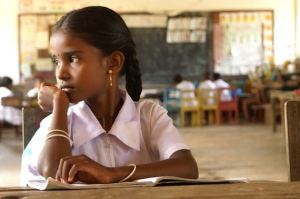All my life my mother encouraged me to attend college, obtain a degree, and procure a job before I married. Her reasoning for pushing me toward an education and a career rested on the fact that for many women in her generation college – and its resulting career path – was not a viable option available to them. In 1965 Congress passed the Higher Education Act (HEA), which created Federal funding opportunities for students from low-income families. In 1972 the HEA was further enhanced by the passage of Title IX, as well as various amendments through the late 1970’s, thus making college a realistic option for low- and middle-income students, especially women. By the time I graduated from high school, in 1984, government grants and various scholarships created options for higher education for anyone who chose to continue his or her education beyond the secondary level, not just the very wealthy.
These changes – especially Title IX – instituted a shift in the population demographic at colleges and universities across the U.S. At my alma mater, the University of Florida, which did not admit women until 1947, the number of women enrollees has exceeded men since 1998. This trend mirrors the rest of the country, where women have steadily outnumbered men at both public and private colleges and universities since the 1970’s, bringing the ratio of male to female students enrolled in U.S. higher education institutions to 40-60.
So, what does all this mean for women and Society in general?
It means greater opportunity for our girls. It means greater opportunity for our economy. It means better, more fulfilling adulthood, marriages, and families for our children – both our boys and our girls.
It means that our country thrives when ALL members have equal opportunity for education and employment.
Knowing how education of all children benefits our society here in the U.S., imagine how global poverty might be impacted if girls around the world are provided the same educational opportunities as boys. The effects of educating girls and reducing global illiteracy rates can be seen through the efforts of such groups as Save the Children and the United Nations. When women are educated, they are “more likely to send their children (especially girls) to school, become more economically self-reliant, and more actively engaged in their country’s social, political, and cultural life.” (Global Female Illiteracy by Nadiya Omar)
While major obstacles exist in areas such as rural Pakistan (where the literacy rate among women is a mere 8%) and Guinea (where the literacy rate for men is 50% compared to 26% for women), both government and non-government organizations are making some headway in demonstrating the positive impact and economic importance of educating girls. Infant mortality rates, juvenile deaths, maternal childbirth fatalities, credit services, and economic prosperity are all linked to literacy. Unfortunately, many extremely rural areas are dominated by religious culture that prohibits educating girls – a gross misinterpretation of Islam – and thus leaders of these communities are most resistant to instituting change in their educational practices. (Omar) Fortunately, the United Nations, through the work of its various branches such as UNESCO (United Nations Educational, Scientific, and Cultural Organization) and UNGEI (United Nations Girls’ Education Initiative) has led the way in combating global illiteracy by launching the Millennium Development Goals (MDGs), which are part of the Global Partnership for Development. In 2000, world leaders adopted eight goals, set to be achieved by 2015, that are both global and local. The main purpose of the MDGs is to ensure that human development will reach everyone, everywhere, cutting world poverty in half, thereby saving tens of millions of lives.
Educating girls clearly sits at the top of this list of goals.
Organizations such as The Borgen Project, CARE, Camfed, Central Asia Institute, Developments in Literacy, and The Girl Effect all work toward improving educational opportunities for girls throughout the world. Through the power of technology you, too, can get involved in educating the world’s girls. Simply click on any of the above links, or head over to Educating Girl Matters, and select the organization that appeals to you and your concerns. All of these organizations provide information about the global crisis of illiteracy among girls as well as ways individuals can get involved in helping overcome the crisis.
So, go, click, learn, and help. But don’t go without telling us about your own educational experiences in the comments section below! Did your family promote education for girls? Were you aware of the crisis of illiteracy among women? Do you currently support these or any other organizations that work to educate girls?




Pingback: On The Importance of the Global Education of Girls | Beyond Lipstick and Petticoats